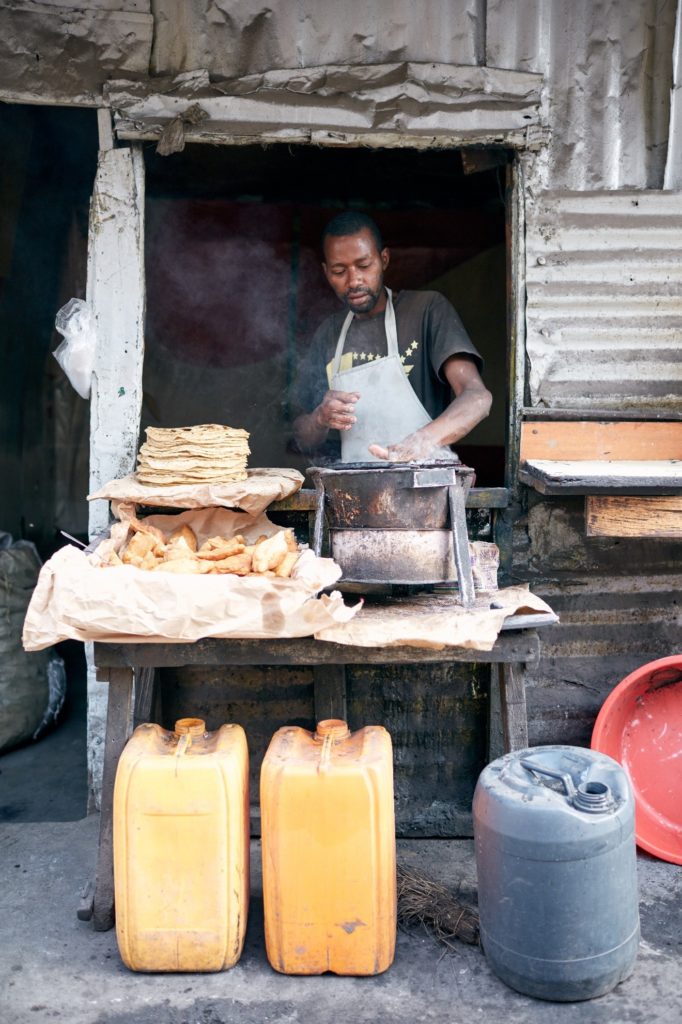This post was written by Abi Weaver, Director of the Global Technology Project, American Red Cross.
Earlier this year, we extended the American Red Cross Home Fire Campaign overseas. And given this month’s focus on fire prevention, we wanted to update you on our progress.
This July, we announced partnerships with two sensor manufacturers—Lumkani and Halo Smart Labs—as well as more than a dozen other organizations, including CORC, frog and UNICEF—to improve the early detection, warning, and response to fires in informal settlements in Kenya and South Africa. Two communities in Nairobi and Cape Town are currently leading the installation and testing of low-cost, smart fire alarms, which can distinguish between smoke and fire, in thousands of homes.
To complement these efforts, we are also pursuing opportunities to improve the local response mechanisms through volunteer teams, policy change, and an open innovation challenge. Additionally, we are researching how best to add value by incorporating other types of sensors for heat waves, enabling technologies and complementary services like home security, as well as developing a sustainable business model to support access to and expansion of these solutions.
So far, we’ve had a lot of opportunities to apply what has worked well in the U.S.—and we’ve had even more opportunities to develop custom solutions, hand-in-hand, with these two communities in Nairobi and Cape Town. This ensures that not only is the technology appropriate for their needs and environment, but is also affordable and accessible. Scroll down to see how we’ve worked together to make the slums safer.
Step 1: Learning with the communities
Initially, local volunteers mapped with GIS technology two settlements in Nairobi and Cape Town to help community leaders identify who could benefit most from smart fire sensors and better understand the surrounding environment, such as the ratio of businesses to homes to schools and other community centers.
They also visited the homes of several residents to understand their risks, expectations and aspirations, and to solicit their input to the fire sensor installation and post-installation activities. Together, we established a deep understanding of people’s needs and community dynamics, which will ultimately help us co-create a responsive market strategy and sustainable business model.
Step 2: Installing and educating
In one week, we successfully installed more than 1,000 sensors in Nairobi thanks to high community demand and the capacity of our extensive volunteer network. We have a similar goal in Cape Town. The sensors were specially designed for low-resource environments and are networked together to give neighbors an early warning and assist the Red Cross in responding to a fire outbreak.
In addition to dealing with fires after they occur, we are using creative methods to educate the communities on how they can prevent home fires and lower their risks. Cooking competitions, outreach to food vendors, fuel stations and other businesses, and school campaigns have been well-received.
Step 3: Designing with the communities
Now, we are listening to the communities’ reactions to the sensors, and co-designing a response system and business model that meets the needs of residents and local leaders. This is where we hear sentiments like, “The most valuable thing in our home is a fire sensor.” We are also capturing areas for improvement.
Residents with sensors are keeping diaries of their experiences, participating in community workshops, and co-designing improved prototypes with local technologists. This is a sampling of the decisions community members are making as part of the participatory innovation process:
- How would you name a fire sensor in one word?
- How would you advertise it?
- How should the fire sensor be maintained?
Step 4: Testing with the communities
Next month, residents in both cities will run fire response simulations with the Red Cross and local fire departments to test the sensors, exercise their response systems, and evaluate our proposed business models.
Step 5: Scaling with the communities
In early 2016, we will publish our learning and recommendations for future phases of this ground-breaking experiment. Our ultimate goal is to replicate and expand these solutions in additional communities where the fire risk is great and to ultimately #endslumfires.
As we learn more and advance this work, we will be back to share more. In the meantime, please visit Tech4Resilience.org to follow our progress.
Photos: American Red Cross / Juozas Cernius






